|
|
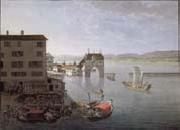 |
Johann Jakob Meyer
|
|
b Winterthur, 7 Oct 1763; d Aussersihl, Schwyz, 10 April 1830,Swiss painter and engraver. He studied under Johann Rudolf Schellenburg in Winterthur and then, in 1778, with Heinrich Rieter (1751-1818) in Berne, where he was also influenced by the topographical landscapes of Johann Ludwig Aberli. He was adept at executing such sharply detailed engravings of Swiss cities as View of Lucerne (c. 1790; e.g. Lucerne, Zentbib.), which he sold to tourists. In 1802 he published an important series of views of Switzerland, which were widely circulated. His skill as a painter of animals was sometimes combined with his rendering of the landscape, as in View of the Lake of Bienne (c. 1800; Winterthur, Kstmus.). In 1807 he taught drawing in Basle and in 1814 was active in the area around Lake Constance. His paintings are often characterized by warm colours and frequently capture the atmosphere of late afternoon, as in Murg on the Lake of Walen (c. 1820; St Gall, Kstmus.). Many of his landscapes are straightforward depictions of the Swiss countryside, stressing the romantic nature of the scene, as in View of the Area of Bex (1821; Winterthur, Kstmus.). He painted in Zurich in 1827 and was known to have travelled to Munich and Dresden. His works are important visual documents of an image of the pastoral countryside frequently propagated by Swiss artists in accordance with the philosophical ideals of Jean-Jacques Rousseau |
|
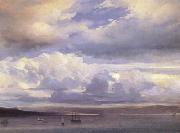 |
Johann Jakob Ulrich
|
|
impression atist
28 Feb 1798 -- 17 March 1877.
Swiss painter. He first studied under his father and then in Paris in 1822 in the studio of Jean-Victor Bertin. As a student he concentrated on unusual lighting effects in his landscape paintings well before they became a hallmark of the precursors of the Impressionists. In 1824 at the Salon in Paris he first saw paintings by Constable. On a trip to Italy in 1828 he did studies en plein air as preliminary sketches for his studio paintings. His early paintings emphasize brilliant colour, low horizons and scientific observation of cloud formations in a manner similar to Constable's studies, which he actually saw on visits to England in 1832 and 1835. Like Eugene Boudin, Ulrich was interested in poetic evocations of sun, water and effects of atmosphere rather than in the precise delineations of topography typical of Swiss art of that period. From 1824 he showed regularly at the Salons in Paris and in 1837 he returned to Zurich. Because the Swiss public was reluctant to accept his freer, |
|
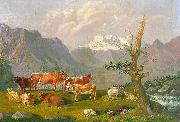 |
Johann Kaspar Scherrer
|
|
painted Weidelandschaft in den Schweizer Bergen mit Katarakt und Gebirgshorizont in 1739 - 1806 |
|
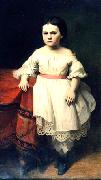 |
Johann Koler
|
|
(8 March 1826, in Vastemõisa near Suure-Jaani, Viljandi County, Estonia - 22 April 1899 in St. Petersburg, Russia) was an Estonian painter. He is considered to have been the first professional Estonian painter. He distinguished himself primarily by his portraiture and to a lesser extent by his landscape paintings. Some of his most notable pictures depict the Estonian rural life in the second half of the 19th Century.
Johann Köler was the seventh child born to a peasant family. Despite the poverty of the parents Köler managed to attend the elementary and the district schools in Viljandi. Then he attended a workshop of master painters in Cesis (then in Livonia).
In 1846, Köler travelled to St. Petersburg to work as a sign writer, where his talent was soon discovered. From 1848 to 1855 Johan Köler studied drawing and painting at the St. Petersburg Imperial Academy of Arts.
During 1857 Köler travelled to Paris via Berlin, later returned to Germany then travelled to the Netherlands and Belgium. In 1858, he travelled across the Alps to Milan, Geneva, Florence and Rome. There, he studied in a private academy and devoted his time to watercolor technique. In Rome during 1859 he presented his composition "Christ on the Cross".
Answering the call of the St. Petersburg Academy of Arts, Köler returned to the city in 1861. From 1862 to 1874 he was a teacher of the Grand Duchess Maria Aleksandrovna, the daughter of Czar Alexander II of Russia. In 1869-1870, he worked as a lecturer at the St. Petersburg Academy of Arts. From 1886 to 1889 Johan Köler worked in Vienna, Nice and Paris. |
|
|
|
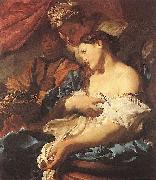 |
Johann Liss
|
|
Also called Jan Lys, (c. 1590 or 1597 - 1627 or 1631) was a leading German Baroque painter of the 17th century, active mainly in Venice.
Liss was born in Oldenburg (Holstein) in Schleswig-Holstein, Germany. After an initial education in his home state, he continued his studies, according to Houbraken, with Hendrick Goltzius in Haarlem and Amsterdam. Around 1620 he travelled through Paris to Venice. He moved to Rome around 1620?C1622, and his first works there were influenced by the style of Caravaggio.
Although his earlier work was concerned with the contrasts of light and shadow, his final move to Venice in the early 1620s modified his style and gave impetus to brilliant color and a spirited treatment of the painted surface.In 1627, he was created an admired large altarpiece, the Inspiration of Saint Jerome in San Nicole da Tolentino. His loose brushstrokes seem precursor to rococo styles of Guardi brothers.This final style, along with that of other "foreign" painters residing in Venice, Domenico Fetti and Bernardo Strozzi, represent the first inroads of Baroque style into the republic.
Liss fled to Verona to escape the Plague spreading in Venice, but succumbed there prematurely in 1629. According to Houbraken, he worked day and night on his paintings, so that Joachim von Sandrart felt that his health was at risk and urged him to join him in Rome
|
|
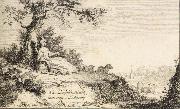 |
Johann Ludwig Aberli
|
|
Swiss, 1723-1786, Swiss painter, draughtsman and engraver. In 1741 he moved to Berne, where he took drawing lessons with Johann Grimm (1675-1747), whose school of drawing he took over in 1747. He visited the Bernese Oberland with Emanuel Handmann, Christian Georg Schetz (1718-91) and Friedrich Wilhelm Hirt (1721-72) in 1759 and in the same year travelled to Paris with Adrian Zingg (1734-86). This was his only trip abroad, but it determined him to work exclusively as a landscape painter. After nine months he returned to Berne, where his landscape views became popular, particularly with foreign travellers, enamoured of 'Nature' and keen to retain souvenirs of their travels. He was one of the first artists to portray the beauties of the Swiss countryside; his favourite subjects were the Aare Valley and views of Swiss lakes (e.g. View of Erlach on the Lake of Biel; Berne, Kstmus.). He invented a technique known as the 'Aberli style', which consisted of watercolour washes added to an image in which slightly smudged outlines were achieved through a combination of engraving and etching. The prints were made from drawings taken from nature and finished in the studio. His style was characterized by delicate execution, an intimate narrative approach, refined colours and the ability to convey a light and vaporous atmosphere. Aberli's success was such that he had to employ assistants and pupils to aid him in the coloration process; his pupils included Erasmus Ritter, Johann Jakob Biedermann, Marquard Wocher (1760-1830), Gabriel Ludwig Lory the elder (1763-1840) and Peter Birmann. From 1773 to 1775 Aberli also painted a series of costumes in response to tourist demand. |
|
|
|
|
|
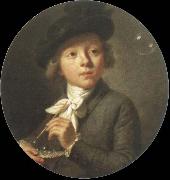 |
johann melchior wyrsch
|
|
johann melchior wyrsch (1732-98) was born in buochs, switzerland. in 1753 he went to rome to study with gaetano lapis and then at the academie francaise. |
|
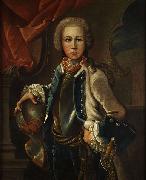 |
Johann Michael Franz
|
|
Seine Eltern waren der Zimmermeister Jakob Franz , und Anna geb. Lueger. Seine Ausbildung genoss er im Umkreis des Augsburger Reichsstädtischen Kunstakademiedirektors Johann Georg Bergmuller (Bergmiller) (1688-1762); nach eigenen Angaben schloss er sie 1733 ab. |
|
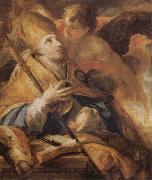 |
Johann Michael Rottmayr
|
|
Austrian,1654-1730
Austrian painter and draughtsman. He is most notable for large-scale religious and secular decorative schemes, and his career heralded the important 18th-century German contribution to late Baroque and Rococo fresco painting. He was probably taught by his mother, who was a painter of wooden sculpture. Between 1675 and 1687-8 he was in Venice as a pupil and assistant of the Munich artist Johann Carl Loth, whose studio attracted many painters from Austria and southern Germany. It is possible that Rottmayr also visited other Italian cities, in particular Bologna and Rome. He returned to Salzburg in the late 1680s a mature painter and immediately received commissions for panels and frescoes. In 1689 he painted mythological scenes for the Karabinierisaal at the Residenz in Salzburg (in situ); in composition and style these are close to high Baroque models, particularly the work of Pietro da Cortona and Peter Paul Rubens. Such models, as well as the example of Loth, and Venetian painting, had an important influence on Rottmayr's panel paintings of this period, for example the Sacrifice of Iphigenia (c. 1691; Vienna, Belvedere) or St Agnes (1693-5) and St Sebastian (1694; both Passau, Cathedral). In these, the solidity of the figures is emphasized through the use of intense colours. For Rottmayr, however, the rational development of the figures and the composition was less important than the overall effect achieved by the use of colour. Incorrect details of anatomy and perspective found compensation in greater expressiveness, mainly conveyed by gesture and pose. Rottmayr's images are filled with plastic elements, creating a staccato effect. Several very important early commissions paved the way for Rottmayr's move to Vienna in the late 1690s. |
|
 |
Johann Michael Sattler
|
|
(28 September 1786, Herzogenburg, Lower Austria - 28 September 1847, Mattsee, Salzburg) was an Austrian portrait and landscape painter, best known for his large-scale panoramas.
Sattler attended the Vienna Academy beginning in 1804 under the tutelage of Hubert Maurer. In 1819 Sattler moved to Salzburg, where in 1824 he began to paint a 360-degree panorama of the city as seen from the top of Salzburg's castle. The massive work covered 125 square metres and was first exhibited in 1829. Salzburg made him an honorary resident. Stattler toured across Europe with the painting for ten years, writing about his return in 1838, "with 30 tons and crossing approximately 30,000 kilometres of land and water, a feat no one had ever done before me and one which would be difficult to repeat in the future." Satler's son, the artist Hubert Sattler, donated the work to the city in 1870. The painting is now on display at the Salzburg Museum in a specially designed area called the Panorama Museum. |
|
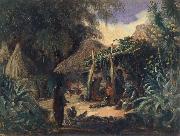 |
Johann Moritz Rugendas
|
|
Augsburg 1802-1858 Weilheim an der Teck,was a German painter, famous for his works depicting landscapes and ethnographic subjects in several countries in the Americas, in the first half of the 19th century. Rugendas was born to the seventh generation of a family of noted painters and engravers of Augsburg (he was a grandson of Georg Philipp Rugendas, 1666-1742, a celebrated painter of battles), and studied drawing and engraving with his father, Johann Lorenz Rugendas II (1775-1826). From 1815 to 1817 he studied with Albrecht Adam (1786-1862), and later in the Academy de Arts of Munich, with Lorenzo Quaglio II (1793-1869). Inspired by the artistic work of Thomas Ender (1793-1875) and the travel accounts in the tropics by Austrian naturalists Johann Baptist von Spix (1781-1826) and Carl von Martius (1794-1868), Rugendas arrived in Brazil in 1821, where he was soon hired as an illustrator for Baron von Langsdorff's scientific expedition to Minas Gerais and Sao Paulo. Langsdorff was the consul-general of the Russian Empire in Brazil and had a farm in the northern region of Rio de Janeiro, where Rugendas went to live with other members of the expedition. In this capacity, Rugendas visited the Serra da Mantiqueira and the historical towns of Barbacena, Sao Joao del Rei, Mariana, Ouro Preto, Caete, Sabara and Santa Luzia. |
|
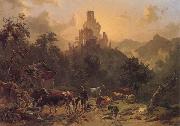 |
Johann Nepomuk Rauch
|
|
(1804 Vienna - 1847 Rome) was a very significant Austrian Biedermeier painter of the 1st half of the 19th century. |
|
|
|
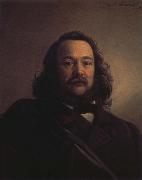 |
Johann Peter Hasenclever
|
|
1810 Remscheid-1853 Dusseldorf, German painter. His artistic talent was recognized in 1827, while he was at school in D?sseldorf. The same year he embarked on a course in architecture at the Akademie in D?sseldorf. In 1828 he turned to the study of history painting. After a difference of opinion over the theory of art with the Director of the Akademie, Wilhelm von Schadow, Hasenclever went home to Remscheid. There he taught himself portrait painting. An example of his work from this period is the portrait of Gertraude Scharff (1832-3; Remscheid, Dt. Werkzeugmus. & Heimatmus.). From 1832 to 1838 Hasenclever again studied at the Akademie in D?sseldorf in a painting class taught by Ferdinand Theodor Hildebrandt (1804-74). In portraits and humorous genre paintings Hasenclever found a field suited to his gifts. Pithy commentaries on the everyday life of the lower middle classes are present in all of Hasenclever's work. He was best known for subjects such as wine-tastings and cellar scenes, and he also made a series of Jobs pictures, humorous, ironic interpretations of popular life based on the poem 'Jobsiade', a grotesque and comic heroic epic written by Carl Arnold Kortum in 1784. |
|
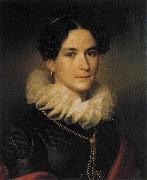 |
Johann Peter Krafft
|
|
(15 September 1780 - 28 October 1856) was a German-Austrian painter.
Krafft was born in Hanau, Hesse. At the age of ten, he began his art studies at the Hanau Akademie. In 1799, he moved to Vienna and studied at the Academy of Fine Arts for three years under the tutelage of Heinrich Feger. From 1802 to 1808, he studied in Paris, with Jacques-Louis David and François Gerard, and then in Rome. On his return to Vienna, he became a successful professional painter, producing numerous portraits.
In 1828, Krafft became director of the Imperial and Royal Picture Gallery in Belvedere Palace.
Johann Peter Krafft died at the age of 76 in Vienna, where he was buried at the Zentralfriedhof. |
|
 |
Johann Rudolf Huber
|
|
Johann Rudolf Huber (April 21, 1668; February 24, 1748) was an eminent Swiss portrait artist. Among his famous subjects were Charles III William, Margrave of Baden-Durlach, Joseph I, Holy Roman Emperor and Albrecht von Haller .
|
|
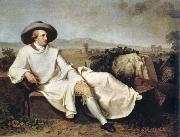 |
johann tischbein
|
|
Johann Heinrich Wilhelm Tischbein, also known as Goethe-Tischbein (15 February 1751 in Haina ?C 26 February 1828 in Eutin) was a German painter. He was a descendant of the Tischbein family of painters, and a pupil of his uncle Johann Jacob Tischbein.
Like many contemporary colleagues, Tischbein lived in Rome for some years. During his first stay in Rome (1779?C1781) his style changed from Rococo to Neoclassicism. He painted landscapes, historical scenes and still lifes. His second stay in Rome lasted 16 years (1783?C1799). He met Johann Wolfgang von Goethe there in 1786, made friends with him and accompanied him to Naples in 1787. Later, Goethe recounted this travel in his Italian Journey. Also in 1787, Tischbein painted his most famous work, a portrait of Goethe as a traveller in the Roman Campagna (now in the Städel museum, Frankfurt am Main).
From 1808, Tischbein was a painter at the court of Oldenburg in Northern Germany.
|
|
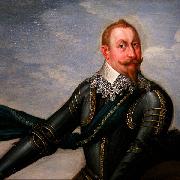 |
Johann Walter
|
|
painted Gustavus Adolphus of Sweden at the Battle of Breitenfeld in 1632 |
|
|
|
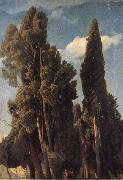 |
Johann Wilhelm Schirmer
|
|
Julich 1807-1863 Karlsruhe,was a German landscape artist from Julich, within the Prussian Duchy of Julich. The artist, a namesake of Friedrich Wilhelm Schirmer, had a similar aim and career. He first was a student, and subsequently became a professor in the academy of Dusseldorf. He became known as one of the first of the so-called Dusseldorf landscape school. In 1854 he was made director of the art school at Karlsruhe, where he died. |
|
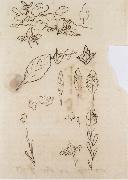 |
Johann Wolfgang von Goethe
|
|
Frankfurt 1749-1832 Weimar,was a German writer and according to George Eliot, "Germany's greatest man of letters and the last true polymath to walk the earth." Goethe's works span the fields of poetry, drama, literature, theology, humanism and science. Goethe's magnum opus, lauded as one of the peaks of world literature, is the two-part drama Faust. Goethe's other well-known literary works include his numerous poems, the Bildungsroman Wilhelm Meister's Apprenticeship and the epistolary novel The Sorrows of Young Werther. Goethe was one of the key figures of German literature and the movement of Weimar Classicism in the late 18th and early 19th centuries; this movement coincides with Enlightenment, Sentimentality (Empfindsamkeit), Sturm und Drang and Romanticism. The author of the scientific text Theory of Colours, he influenced Darwin with his focus on plant morphology. He also served at length as the Privy Councilor ("Geheimrat") of the duchy of Weimar. Goethe is the originator of the concept of Weltliteratur ("world literature"), having taken great interest in the literatures of England, France, Italy, classical Greece, Persia, Arabic literature, amongst others. His influence on German philosophy is virtually immeasurable, having major effect especially on the generation of Hegel and Schelling, although Goethe himself expressly and decidedly refrained from practicing philosophy in the rarefied sense. Goethe's influence spread across Europe, and for the next century his works were a major source of inspiration in music, drama, poetry and philosophy. Goethe is considered by many to be the most important writer in the German language and one of the most important thinkers in Western culture as well. |
|
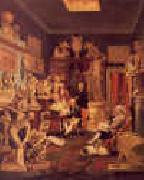 |
Johann Zoffany
|
|
German
(Resident in Britain)
1734-1810
Johann Zoffany Galleries
Painter of portraits, conversation pieces, and theatrical scenes, Zoffany was born in Germany and came to England about 1758 after studying in Italy. He began by painting clock faces and doing hack work, before turning to painting theatrical scenes, especially depicting David Garrick. He was favoured by the royal family. George III nominated him for the Royal Academy in 1769 and recommended him to the duke of Tuscany. |
|
|
|
|
|
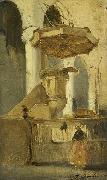 |
Johannes Bosboom
|
|
(born The Hague, February 18, 1817 - died there September 14, 1891) was a Dutch painter and watercolorist of the Hague School, known especially for his paintings of church interiors.
At the age of 14 he became a student of Bartholomeus van Hove and painted in his studio along with Van Hove's son Hubertus van Hove. Together they worked on the pieces of scenery that Van Hove created for the Royal Theatre in The Hague. In addition, Bosboom took lessons from 1831 to 1835 and again from 1839 to 1840 in the Hague Academy of Art. Here he also made the acquaintance of Antonie Waldorp and Wijnand Nuyen.
The young Bosboom traveled to Germany in 1835 to Dusseldorf, Cologne and Koblenz and painted the watercolor View of the Mosel Bridge at Koblenz. This painting was purchased by Andreas Schelfhout, who became his confidante and friend. In 1939 he traveled to Paris and Rouen and received a silver medal for View of the Paris Quay and the Cathedral at Rouen. He also painted a number of church interiors, a relatively traditional genre in which the seventeenth century artists Pieter Saenredam and Emanuel de Witte served as important examples. Bosboom had a great deal of success with these pieces, and for the rest of his career he would repeatedly return to this theme, which was the one in which he would achieve his greatest fame.
Bosboom's choice of subject matter may seem to isolate him from the rest of the Hague School, but his search for ways to reproduce the spatial atmosphere through light, shadow, and nuances of color places him in the very mainstream of this group. In 1873, during a stay in Scheveningen, he painted many watercolors of town views, the dunes, the beach and the sea. It is possible that these watercolors encouraged Hendrik Willem Mesdag and Jacob Maris to concentrate further on the sea and beach as subjects.
|
|
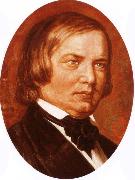 |
johannes brahms
|
|
Born: 7 May 1833
Birthplace: Hamburg, Germany
Died: 3 April 1897 (liver cancer)
Best Known As: German composer of "Brahms' Lullaby" ("Wiegenlied")
|
|
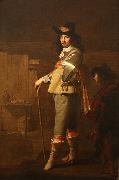 |
Johannes Cornelisz Verspronck
|
|
(between 1600 and 1603, Haarlem - buried June 30, 1662, Haarlem) was a gifted Dutch Golden Age portraitist.
He was the son of the painter Cornelis Engelsz from Gouda, who taught him to paint portraits. In 1632 he became a member of the Haarlem Guild of St. Luke and started a successful career as a portraitist of mostly Catholic sitters in Haarlem. He may have been a Frans Hals pupil, and was strongly influenced by him, especially in his natural expressions and relaxed poses. He is best known for his exactness in painting details such as jewelry and lace, which made him quite popular with female sitters. Most notably, he won a lucrative commission in 1642 for a group portrait of the regentesses of the St. Elisabeth Gasthuis, at the time the wealthiest charity institution in Haarlem. This was won at the expense of Frans Hals himself, who had painted the regents of the St. Elisabeth Gasthuis in 1641 and fully expected to win the commission for the women. |
|
 |
Johannes Deiker
|
|
painted Schwarzer Setter apportiert Hasen in winterlicher Landschaft in 1886
1822-1895 |
|
|
|
|
|
|
|
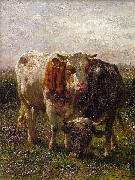 |
Johannes Hubertus Leonardus de Haas
|
|
(25 March 1832 - 4 August 1908) was a Dutch animal and landscape painter, and a peripheral figure of the Hague School.
Born at Hedel, De Haas spend his youth in Amsterdam where he got his first art education at evening-classes at the Koninklijke Academie. Consequently he moved to Haarlem where he was apprenticed to the artist Pieter Frederik van Os. During his stay in Haarlem he befriended Paul Gabriël and Hendrik Dirk Kruseman Van Elten who were also studying with Van Os.
In 1853, together with his two friends, De Haas decided to go to Oosterbeek. Here they came into contact with the influential landscape painter Johannes Warnardus Bilders and the group of painters which had gathered around him, many of whom would later be part of the Hague School. De Haas also met his future wife in Oosterbeek, Bilders' daughter, Caroline. In 1855 he received good reviews for his pictures that were exhibited in Paris from the noted art critic Jean Baptiste Gustave Planche.
In 1857 De Haas first went to Brussels, where he became friends with Willem Roelofs. De Haas frequently returned to the Netherlands and Oosterbeek for inspiration and Caroline. From 1860 his friend Gabriël also lived in Brussels, and De Haas often painted cattle in the landscapes of both Roelofs and Gabriel, fitting in perfectly with both their styles. In 1860 he won the gold medal at the exhibition of Utrecht.
From 1861 until 1869 De Haas is permanently settled in Brussels, painting mainly on the coasts of Flanders and Picardie in northern France. He married Caroline Bilders in 1862, and in 1864 they are briefly joined by her brother, the promising painter Gerard Bilders. In 1865 Caroline dies at the age of 24 of tuberculosis, leaving him with a young son. During his stay in Brussels De Haas is instrumental in passing on the style of the Barbizon school to the painters at Oosterbeek.
|
|
|
|
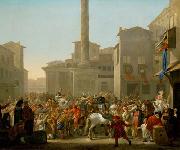 |
Johannes Lingelbach
|
|
(Frankfurt, 1622 - Amsterdam - 1674), was a Dutch Golden Age painter, associated with the second generation of Bambocciate, a group of genre painters working in Rome from 1625 - 1700.
|
|
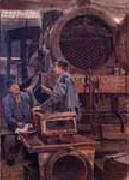 |
Johannes Martini
|
|
(9 June 1866 C 7 February 1935) was a German oil painter and graphic artist.
Martini was born in Chemnitz, Saxony. He was a student of Franz Skarbina at the Akademie der Kenste of Berlin, and he spent two years at the Acad??mie Julian in Paris. Martini exhibited his work at the Great Art Exhibition in Berlin and the Paris Salon. He participated in the jubilee exhibit for the 90th birthday of Luitpold of Bavaria, as well as the Annual Exhibition in Berlin's Glass Palace. |
|
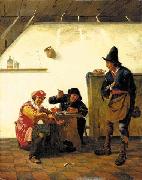 |
Johannes Natus
|
|
painted Peasants smoking and making music in an inn in 1660 |
|
 |
Johannes van Wijckersloot
|
|
Johan Hendriksz Van Wijckersloot (1557- 1602)
Born in Utrecht, Utrecht, Netherlands on 20 Oct 1557 to Hendrick Roelofsz Van Wijckersloot and Antonia Gosina Van Benthem. He passed away on 27 Jul 1602 in Utrecht, Utrecht, Netherlands |
|
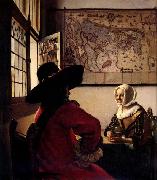 |
Johannes Vermeer
|
|
One of the most talented painters in the Dutch Golden Age , 1632-1675
was a Dutch Baroque painter who specialized in exquisite, domestic interior scenes of ordinary life. Vermeer was a moderately successful provincial genre painter in his lifetime. He seems never to have been particularly wealthy, perhaps because he produced relatively few paintings, leaving his wife and children in debt at his death. Vermeer worked slowly and with great care, using bright colours, sometimes expensive pigments, with a preference for cornflower blue. He is particularly renowned for his masterly treatment and use of light in his work. What strikes in most of his paintings is a certain love, which easily could be called a love sickness, for the people and the objects in his paintings. He created a world more perfect than any he had witnessed. After having been virtually forgotten for nearly one hundred years, |
|
|
|
 |
John warwick smith
|
|
English Painter, 1749-1831
English painter. The son of a gardener to the Gilpin family, he studied under the animal painter Sawrey Gilpin. During a trip to Derbyshire with Gilpin he met George Greville, 2nd Earl of Warwick, who gave him financial support to go to Italy between 1776 and 1781. Smith spent 1778-9 in Naples and was otherwise based in Rome, where he explored the Campagna and made sketches with William Pars and Francis Towne. The strong greens and purples and crisp pen outlines of some of Smith's watercolours are strongly influenced by Towne's style. Smith and Towne travelled together across the Alps on their way back to England in 1781, after which Smith settled in Warwick. He contributed six views to Samuel Middiman's Select Views in Great Britain (1784-5) and between 1784 and 1806 toured Wales 13 times in search of Picturesque and Sublime scenery. He also visited the Lake District between 1789 and 1792, which resulted in the publication of Twenty Views of the Lake District (1791-5); he appears to have been in Devon and Worcestershire as well. Aquatints after Smith were used to illustrate William Sotheby's Tour through Parts of Wales (1794), |
|
|
|
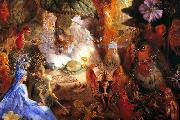 |
John Anster Fitzgerald
|
|
(1819? - 1906) was a Victorian era fairy painter and portrait artist. He was nicknamed "Fairy Fitzgerald" for his main genre. Many of his fairy paintings are dark and contain images of ghouls, demons, and references to drug use; his work has been compared to the surreal nightmare-scapes of Hieronymus Bosch and Pieter Brueghel.
The year of his birth, in Lambeth Surrey,has been variously given, though 1819 is the likeliest.He was of Irish ancestry, the son of the minor poet William Thomas Fitzgerald.
In 1849 Fitzgerald married Mary Ann Barr and they raised at least four sons and a daughter.
As an artist, Fitzgerald appears to have been largely self-taught. His work was first shown at the Royal Academy of Arts, London, in 1845; he also exhibited at the British Institution, the Society of British Artists, and the Watercolour Society. In the late 1850s he created a series of Christmas fairies for The Illustrated London News.
Fitzgerald gave his works titles that often gave little clear indication of their subjects; art dealers and collectors frequently re-named them, causing great confusion in his artistic canon. Some of Fitzgerald's titles, like The Pipe Dream and The Captive Dreamer, suggest that "Fitzgerald was familiar with the opium dens which, with choral and laudanum, represented the Victorian drug scene."
Fitzgerald created "remarkable fairy pictures of pure fantasy, rarely based on any literary theme."His paintings often use brilliant colors, especially reds, blues, and purples, as in The Captive Robin shown here. He produced a major series of paintings on the Cock Robin themeeamong others, Who Killed Cock Robin?, Cock Robin Defending his Nest, and Fairies Sleeping in a Bird's Nest (the last furnished with a frame made out of twigs). |
|
|
|
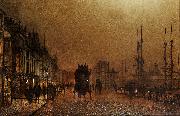 |
John Atkinson Grimshaw
|
|
(6 September 1836 - 13 October 1893) was a Victorian-era artist, a "remarkable and imaginative painter" known for his city night-scenes and landscapes.
His early paintings were signed "JAG," "J. A. Grimshaw," or "John Atkinson Grimshaw," though he finally settled on "Atkinson Grimshaw."
John Atkinson Grimshaw was born 6 September 1836 in Leeds. In 1856 he married his cousin Frances Hubbard (1835-1917). In 1861, at the age of 24, to the dismay of his parents, he left his job as a clerk for the Great Northern Railway to become a painter. He first exhibited in 1862, mostly paintings of birds, fruit and blossom, under the patronage of the Leeds Philosophical and Literary Society. He became successful in the 1870s and rented a second home in Scarborough, which became a favourite subject.
Several of his children, Arthur Grimshaw (1864-1913), Louis H Grimshaw (1870-1944), Wilfred Grimshaw (1871-1937) and Elaine Grimshaw (1877-1970) became painters.
|
|
|
|
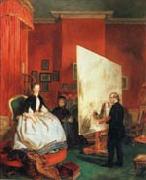 |
John Ballantyne
|
|
British Portrait painter , (1815-1897)
was an English ornithologist. The Gould League in Australia was named after him. His identification of the birds now nicknamed "Darwin's finches" was pivotal in the inception of Darwin's theory of evolution by natural selection, though they are barely mentioned in Charles Darwin's book, On the Origin of Species.Gould was born in Lyme Regis, Dorset, the son of a gardener, and the boy probably had a scanty education. Shortly afterwards his father obtained a position on an estate near Guildford, Surrey, and then in 1818 became foreman in the Royal Gardens of Windsor. The young Gould started training as a gardener, being employed under his father at Windsor from 1818 to 1824, and he was subsequently a gardener at Ripley Castle in Yorkshire. He became an expert in the art of taxidermy and in 1824 he set himself up in business in London as a taxidermist |
|
 |
john banister
|
|
Banister was a violinist, composer and flageolet player for the English court. Much of his life was astir with accusations and innuendo. Nevertheless, he was able to remain in the King's service until his death and a great demand was laid upon him for his "play" songs. |
|
|

